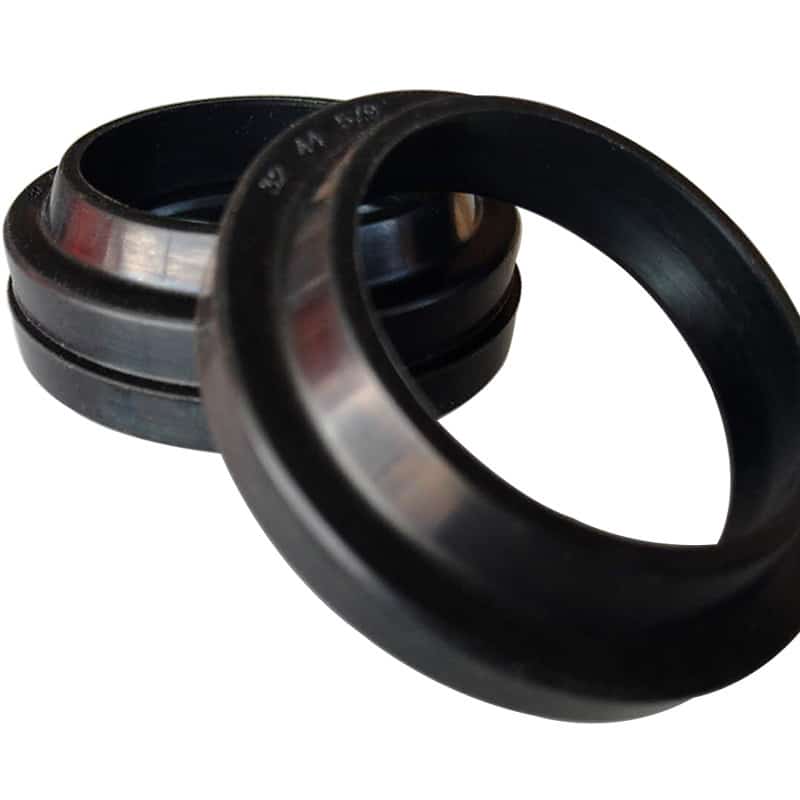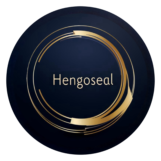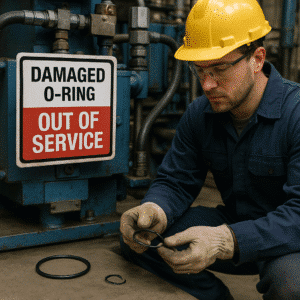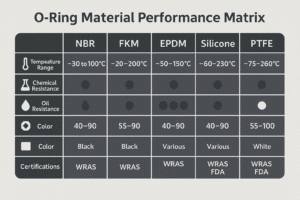A wrong hydraulic seal in a new cylinder design can lead to early failure, leakage, and warranty claims — all before the machine leaves the production line. Are you overlooking critical seal factors during the design phase?
Designing new hydraulic systems without understanding seal compatibility is one of the top reasons OEM cylinders underperform. This guide breaks down the most common errors, so you don’t repeat them in your next build.

Avoiding costly mistakes starts with recognizing how seal design, material, and installation affect overall cylinder performance — especially in high-pressure or high-cycle applications.
What factors are most commonly overlooked in hydraulic seal selection?
Engineers often focus on pressure ratings and forget:
- Dynamic vs static sealing zones
- Fluid compatibility with seal material
- Seal groove dimensions and tolerances
- Temperature cycle impact on seal shrinkage
- Rod finish and surface roughness
For example, failing to match seal hardness with groove dimensions can cause extrusion or compression set. That's why our UN hydraulic seals for OEM rods are pre-tested for material swell and recovery rate across -30°C to 120°C.
How do wrong seals cause cylinder failure?
The wrong seal leads to:
| Failure Type | Root Cause Example |
|---|---|
| Internal leakage | Undersized U-cup or worn lip |
| Rod scoring | Incompatible backup ring geometry |
| Extrusion | Incorrect durometer in buffer seals |
| Seal cracking | NBR used above 120°C |
| Sticking or friction | Excess lip preload |
A real case: one client used general-purpose NBR in a high-frequency compactor. Switching to KDAS buffer seals eliminated seal blowout and extended cycle life by 3x.
Why is seal compatibility with hydraulic fluid critical?
Using the wrong material with incompatible fluids leads to:
- Swelling or shrinkage
- Surface hardening or softening
- Mất độ đàn hồi
- Seal dissolution
For instance, mineral oils work with NBR, trong khi synthetic fluids require FKM or PU. You can reference our Hướng dẫn lựa chọn phớt thủy lực for a complete material-fluid compatibility matrix.
Do new cylinder seals need different groove designs?
Yes. Designing grooves based on generic seals is a major mistake. Each seal type — rod, piston, wiper, or buffer — requires specific groove width, depth, and chamfering.
Our engineers use hydraulic seal stack design to match the sealing elements to space, avoiding overcompression or movement restrictions under pressure cycles.
Mẹo: Groove tolerances must accommodate thermal expansion and compression set over thousands of cycles.
What is the impact of improper rod surface finish?
Rod finish affects sealing lip behavior. A surface that’s too rough causes lip wear; too smooth leads to stick-slip or leakage.
Recommended finish:
- Ra: 0.2–0.4 µm
- Rz: 1–3 µm
We advise pairing UHS buffer seals with hard chrome rods in high-speed cylinders to stabilize lip friction.
How can you ensure seal lifespan in new hydraulic designs?
Checklist:
- Confirm fluid and temperature compatibility
- Match dynamic vs static seals per zone
- Use the correct preload and stretch ratios
- Validate PV (pressure × velocity) limits
- Avoid over-tightening during install
Seals like our custom hydraulic seals for OEM cylinders undergo cycle simulation before volume production — this reduces warranty returns and increases first-time pass rate.
Phần kết luận
Avoiding these mistakes during hydraulic seal selection helps OEMs save cost, reduce failures, and speed up commissioning. The right seal isn’t just about pressure — it’s about precision, pairing, and long-term reliability.
Related topic
Các lỗi thường gặp của phớt thủy lực và cách phòng ngừa
How to Measure Hydraulic Seals for Perfect Replacement
Hydraulic vs Pneumatic Piston Seal Applications Explained
Get It Right from the Start
Designing a new hydraulic system? We’ll help you pick seals that fit pressure, fluid, and temperature cycles from day one.
Email: [email protected]
WhatsApp: +86 17622979498
Send us your drawing or operating specs for quick matching and quote.


